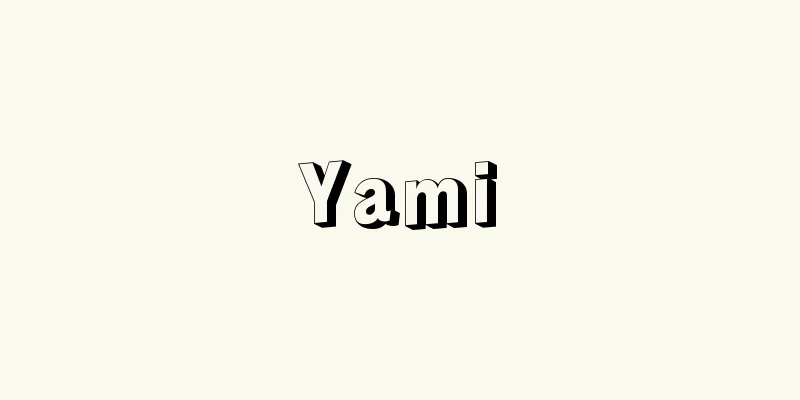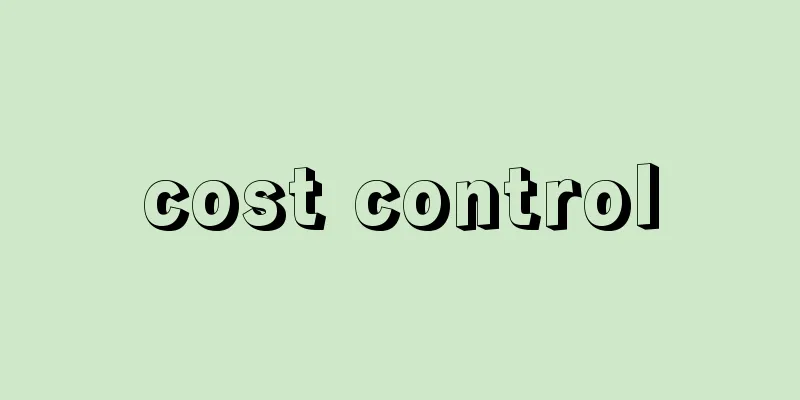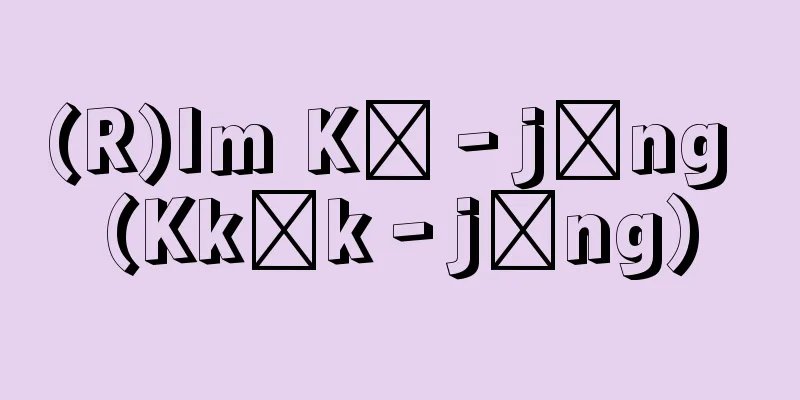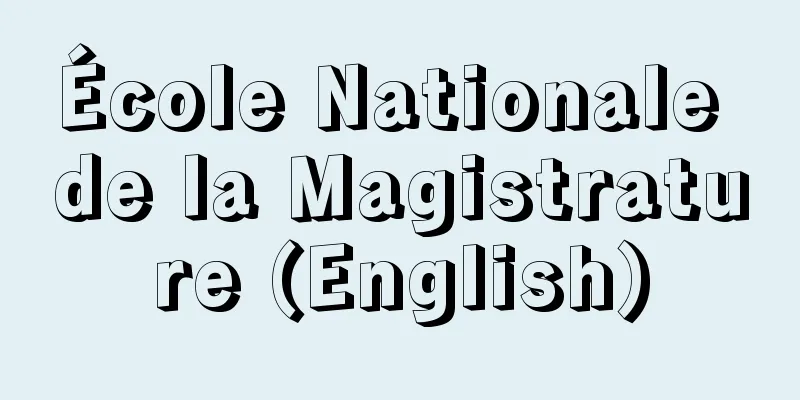Early childhood education
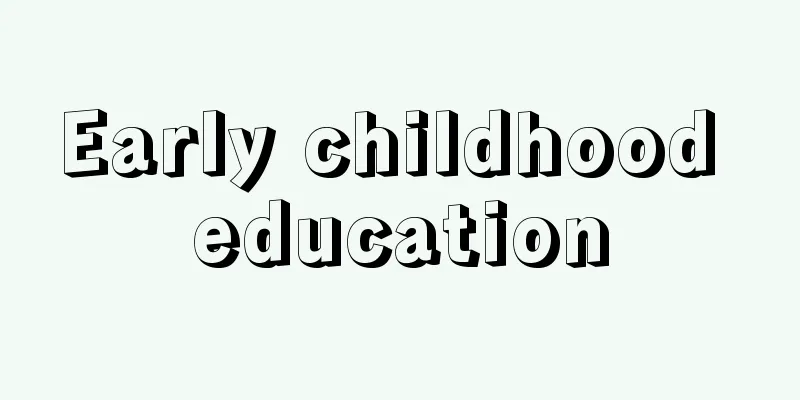
|
Early childhood education can be understood as early childhood education including home education, or as school education at specialized early childhood education institutions. Early childhood education at specialized facilities is sometimes called preschool education. In Japan, kindergartens and nurseries (or daycare centers) are specialized facilities for early childhood education. Kindergartens are schools stipulated in the School Education Act, and take care of children aged 3 to 5 (full age as of April) before entering elementary school, which is compulsory education, and one teacher (caregiver) instructs up to 35 children in a class for about four hours a day. The caregiver who instructs them is a kindergarten teacher. On the other hand, nursery schools are child welfare facilities stipulated in the Child Welfare Act, and childcare there is "integrated care and education," and it is understood that the care for children aged 3 and over is the same as kindergarten education, especially for about four hours a day for children aged 3 and over. The caregiver who instructs them is a nursery teacher. However, specialized support for development from infancy in daycare centers and other places is sometimes called early childhood education. Below, we will mainly discuss early childhood education as specialized education in kindergartens and daycare centers. [Historical Overview of Early Childhood Education] Early childhood education is said to have been founded by the 19th century German philosopher and educator Fröbel, FWA. He named specialized facilities for young children Kindergarten (children's gardens). He believed that children's activities there would be the basis for their intellectual and social development, which would concretely unfold as children's play. In particular, as the foundations of learning, emphasis was placed on knowledge of everyday life such as gardening and housework, mathematical knowledge such as geometric shapes, and knowledge of beauty through color and other aspects. Kindergarten spread throughout the world as a kind of movement. In Japan, it was introduced at the beginning of the Meiji period, and started in 1876 as the kindergarten attached to the Tokyo Women's Normal School. The "Froebel-style" education there emphasized the manipulation of wooden blocks and other play equipment, called "gifts," but gradually the handling of toys changed from a uniform way to materials for children's free play. The person who led this change was Sozo Kurahashi. From the Taisho to Showa periods, he was a professor at Tokyo Women's Higher Normal School and the head of its attached kindergarten, and he advocated and popularized child-centered childcare. His ideas were learned from the "New Education Movement," which was a global educational trend at the time, and he emphasized the educational significance of children's independent and creative activities, activities in groups of children, and the experiences they had there. This idea is called "guided childcare," and it is also the main pillar of early childhood education today. Guidance means that while emphasizing children's ingenuity, the childcare worker guides them, and this guidance is based on the idea of indirect education, which avoids direct instruction as much as possible and places objects that interest children in the kindergarten environment to stimulate their activities. As for nursery schools, facilities were established during the Meiji period to take care of children when their parents were unable to look after them, such as during busy farming seasons, and gradually they came to play a role in early childhood education. [Official regulations for early childhood education] Kindergartens are required to create their own curriculum and teaching plans in accordance with the Kindergarten Education Guidelines established by the Ministry of Education, Culture, Sports, Science and Technology. Nursery schools are similarly required to operate in accordance with the Nursery School Guidelines established by the Ministry of Health, Labor and Welfare, and each is required to create its own curriculum and teaching plans. The parts of the Kindergarten Education Guidelines and the Nursery School Guidelines that relate to early childhood education are almost the same. In particular, they share the same educational content, which will be described later, divided into five areas: "health," "human relationships," "environment," "language," and "expression." The purpose of kindergartens is stipulated in the School Education Law, and Article 22 states, "Kindergartens shall have the purpose of providing care for young children, providing an appropriate environment for their healthy growth, and promoting their physical and mental development, as a foundation for compulsory education and subsequent education." This purpose expresses the uniqueness of early childhood education, while also stating its connection to subsequent school education. Early childhood education is the foundation for elementary and junior high school education and beyond, and is not a direct preparatory education for compulsory education. This education takes the form of promoting development, and teachers do not teach clear educational content as in elementary and junior high schools. It is based on the idea of developmental support, which encourages children's natural development. In addition, kindergartens are designed to provide appropriate care in the sense that they provide meaningful play equipment and materials for children, allowing them to play and promoting their development. Next, Article 23 of the School Education Law lists five goals for kindergartens: "To cultivate the basic habits necessary for a healthy, safe and happy life, and to promote the harmonious development of various bodily functions," "To cultivate an attitude of willingness to participate in group activities, while deepening a sense of trust in family and those close to one another, and nurturing the budding spirit of independence, self-discipline and cooperation, as well as a sense of norms, through group activities," "To cultivate an interest in familiar social life, life and nature, and to cultivate the budding correct understanding, attitude and thinking ability toward them," "Through familiarity with everyday conversations, picture books, fairy tales, etc., to guide the correct use of language and to cultivate an attitude of trying to understand what others are saying," and "Through familiarity with music, physical expression, and modeling, etc., to cultivate the budding rich sensibility and expressiveness." These form the basis of the five areas of educational content. To that end, the Kindergarten Education Guidelines stipulate the following three principles: (1) To enable children to develop stable emotions, express themselves, take independent action, and live a life appropriate to early childhood. (2) To ensure that play, as a spontaneous activity for children, becomes a form of learning that cultivates the foundations of development. To achieve these aims in a comprehensive manner. (3) To provide guidance that is in line with the unique developmental challenges of each child, taking into account the interrelationships between various aspects of the mind and body and the diverse developmental processes. [Characteristics of Early Childhood Education] It cannot be said that all kindergartens and daycare centers practice the official regulations for kindergarten education as is, but they do serve as a kind of philosophy that guides their practice. They are child-centered and at the same time, they place emphasis on educational activities through the kindergarten environment. The elements of these can be divided into several interrelated items. First, children's interests are the basis of education. Being interested and enjoying an activity does not simply motivate a child to participate in the activity; it leads to the child feeling happy, feeling a sense of self-affirmation, concentrating on the activity, and learning a lot. This means that forcing children to do things they are not interested in, or forcing them to learn things they are not interested in, is not acceptable. However, this does not mean respecting children's original interests as they are. As the word "guidance" suggests, the role of childcare workers is to draw out children's interests and further develop them. Secondly, as can be seen from the five areas of educational content, it covers almost everything a child will encounter in their immediate environment. It lists things that a child would be able to understand, do, and be interested in during their normal early childhood life. In terms of educational content, drawing out and nurturing a child's interest means that caregivers suggest activities that will get children interested in educational materials, including play equipment. Children will learn about the characteristics and usage of educational materials, be encouraged to think of ways to make them even more interesting, and then their interest will expand to other things. Thirdly, the fact that learning takes place in play and activities in daily life can be understood by focusing on the "germination" of these abilities. Early childhood education develops various abilities in children, but this is also a period of germination before the development of the foundational abilities that will be fully demonstrated in elementary school and beyond. Not only play, but reading and writing are also just beginning to develop. The same is true for motor skills and interpersonal relationships. In this sense, early childhood education is education that nurtures the seeds of development that are already emerging in children's play and other activities, turning them into autonomous abilities. Fourth, early childhood education provides comprehensive instruction aimed at the harmonious development of children's minds and bodies. In other words, it does not focus on training only specific skills. Of course, children need a variety of skills in their play and daily life, and instruction in these skills is provided, but this is done in a way that helps children understand the overall enjoyment, challenge, and significance of the activity. Children's learning and intellectual development are made compatible with their emotional and social development, and are made to promote each other. Fifth, early childhood is a time when children are provided with opportunities to encounter culture and cultural assets, and education in this area is also emphasized. Children carry out a variety of activities using cultural assets such as picture books, appropriate use of various playground equipment, and games with rules that have developed within culture. In that sense, early childhood education is also education for children to become familiar with culture in their own way. [Care and education] The core concepts of early childhood education are care and education. According to the nursery school guidelines, care refers to maintaining life and emotional stability. This is the foundation that makes education possible, that is, ensuring that children are emotionally stable and happy, and working to create the basic conditions that enable their growth, or preparing the environment around them. Preserving life and maintaining emotional stability as care are also important in kindergartens. In short, fulfilling the function of care means that, from the child's perspective, the early childhood education setting is a place where they can feel safe. In addition to preserving life, it is necessary to stabilize children's emotions and develop a sense of self-affirmation through this. In continuity with the home, children feel that it is okay to be at the nursery school, and their presence is accepted and accepted by the caregivers who are the center of the nursery school environment, and so they begin to live their lives at the nursery school. Little by little, they will find out what they want to do and try to do it. In this way, as they begin to express themselves, their emotions will stabilize and their physical and mental activities will be supported. In this way, education begins with a child expressing himself/herself under stable emotional conditions. Whatever a child is trying to do, anything that can have positive meaning for a child can be considered education. This is because it allows a child to have new experiences, encourages transformation, and leads to growth. Furthermore, as one experience leads to the next and overlaps, a flow of development is created. Development in early childhood education settings is made possible by caregivers supporting the areas where experiences are related to each other and enriching these connections. Caregivers, anticipating the child's future, create a long-term curriculum, identifying the direction in which the child should be developed and utilize their abilities. They then guide and direct the child to develop the play they want to do, which they discover through their encounters with people and objects in the nursery environment. This allows the child to enjoy play, while also getting involved with specific objects, coming up with creative ways to make the activity more interesting, and striving to accomplish something. This allows for sensory and physical learning that is tailored to the object and activity in the child's own way. In group childcare settings, each child's activities and experiences overlap with similar activities and experiences of other children. As they observe what each other is doing, they mutually expand, intertwine, and negotiate what they are trying to do. The negotiation process is built into the activity itself, making it even richer. [Building the foundation for education after elementary school] Early childhood education is the foundation for education after elementary school. Rather than providing early education in anticipation of elementary school education, education appropriate for early childhood will help children develop rich sensory and physical learning skills that will be developed in preparation for elementary school. Education appropriate for early childhood is for children to create play, concentrate, have rich experiences, and ultimately learn through these. Children's activities in kindergarten can be called the budding of learning. On the other hand, elementary school education, especially in the lower grades, is a time when children become aware of their learning, that is, they become aware of what and how they want to learn and engage in learning activities. The connection between kindergarten and elementary school means nurturing the budding of learning and cultivating the foundation for awareness of learning. Therefore, it is important to create an early childhood education curriculum that takes this into consideration and looks to children's future. Three abilities that emerge during early childhood as the foundation for elementary school education are: interest in things, the ability to balance self-expression and self-restraint, and awareness of events. First, the most fundamental element of early childhood education is to foster an interest in the various objects and things that children encounter at home and in kindergarten during their early childhood years. The second type of self-regulation is the ability to store information about things in memory, modify that information according to changes, respond appropriately to the task, inhibit inappropriate responses, and, if circumstances change, select a new necessary response and inhibit responses that were previously appropriate but are now inappropriate. This is the act of finding out what you want to do, taking into consideration those around you, and taking a roundabout way to achieve it. Thirdly, towards the end of infancy, children gradually become aware of what they have noticed in words. The major flow of development in infancy can be seen as a progression from unawareness to awareness of what one does and recognizes. Infants are able to be somewhat aware of what they are doing, but they also become able to clearly express in words what they have understood or noticed in relation to the object. Then, as they move towards school age, they are thought to progress to becoming aware of their inner emotions and recognition/understanding. Towards the end of infancy, children particularly become aware of changes and characteristics of objects. [Childcare worker's response and direction] Direct interaction between childcare workers and children plays a crucial role in realizing care and education. Through interaction, the child is accepted and acknowledged, attention is paid to what the child has begun to do or say, and deficiencies are clarified, which slightly expands the child's current state and increases the momentum for the next activity. Furthermore, the way the childcare worker behaves during the interaction serves as an example for the child. When the child notices things around them, becomes interested in them, or has questions, the childcare worker deepens the child's thinking, connects them to other things, and suggests what the child might be able to do next. [Support for and understanding of parents] In early childhood education, it is important to cooperate with the home and local education to advance the education. Child-rearing support for parents is stipulated as part of the duties of the school, and at the same time, emphasis is placed on parents understanding childcare at kindergartens and daycare centers and how their children are growing up. The infancy and toddler period is a time when cooperation with the home is particularly important compared to later periods. [Evaluation of early childhood education] It is important to evaluate the quality of early childhood education and care in an objective and valid manner. The results of several long-term, large-scale studies in Europe and the United States have shown that specialized early childhood education facilities and facilities that provide early childhood education by considering both care and education are effective in improving academic achievement and various life indicators in elementary school. Evaluation is done in terms of structure and process. The structural aspects of kindergarten and nursery school facilities are easy to evaluate using objective indicators, and are easy for administrative purposes to respond to. The process of education and childcare can be evaluated from four aspects. The first is the environment of the nursery school. Even if the minimum structural standards are met, is it easy for children and caregivers to use, is it arranged in a way that enriches activities, and is it used appropriately? The second is the way caregivers interact with children. Is it based on an understanding of the children, in line with the curriculum, and in a responsive and empathetic manner with the children? The third is an evaluation of the children's condition at any given time. In particular, this is an evaluation of the care aspect of whether the children feel at ease in the activities, and the educational aspect of whether they are concentrating on the activities. The fourth is an evaluation of the quality of early childhood education and childcare based on long-term developmental indicators and in relation to the experiences at the kindergarten or nursery school. →Play →Self-regulated learning →Early education →Cognitive development →Infanthood [Muto Takashi] Latest Sources Psychology Encyclopedia Latest Psychology Encyclopedia About Information |
|
幼児教育には,家庭教育まで含めて幼児期の教育としてとらえる場合と,専門的な幼児教育機関で行なう学校教育を指す場合とがある。また,専門施設における幼児教育をとくに就学前教育preschool educationと称することもある。日本では幼児教育を専門的に担う施設は幼稚園と保育所(あるいは保育園)である。幼稚園kindergartenは学校教育法に規定される学校であり,義務教育である小学校への入学前までの3歳から5歳(4月時点での満年齢)の子どもを預かり,1クラス35名までの定員の子どもを一人の教師(保育者)が1日4時間程度について指導を行なう形としている。そこで指導する保育者は幼稚園教諭である。一方,保育所nursery schoolは児童福祉法に規定される児童福祉施設であるが,そこでの保育は「養護と教育を一体的に行なうもの」としており,とくに3歳以上の1日4時間程度について幼稚園教育と同様のものと理解されている。そこで指導する保育者は保育士である。しかし,保育所などにおける乳児期からの発達の専門的支援を幼児教育とよぶこともある。 以下では,主として幼稚園・保育所における専門的教育としての幼児教育について述べる。 【幼児教育の歴史的概観】 幼児教育は19世紀のドイツの哲学者・教育者フレーベルFröbel,F.W.A.が創始したとされる。彼は幼児のための専門施設をキンダーガルテンKindergarten(子どもの庭)と名づけた。そこでは,子どもの活動が知的発達・社会性の発達の基礎となるものであり,それは具体的には子どもの遊びとして展開されるとした。とくに学習の基礎として,園芸・家事などの生活の知識,幾何学的な形などの数学の知識,色そのほかによる美の知識などを重視している。このキンダーガルテンは一種の運動として,世界中に広がった。 日本では,明治の初めにそれが取り入れられ,1876年,当時の東京女子師範学校附属幼稚園として始まった。そこでの「フレーベル式」教育では,「恩物gift」とよばれる木製ブロックその他の遊具の操作を強調していたが,しだいにその扱いは一律のものから,子どもの自由な遊びとしての素材へと転換していった。その転換を主導したのが倉橋惣三である。大正から昭和にかけての時期に東京女子高等師範学校教授と同附属幼稚園主事を兼ね,児童中心主義的な保育を提唱し,普及させた。その考えは,当時の世界的な教育動向でもあった「新教育運動」に学んだものであり,子どもの主体的・創造的な活動や子ども集団での活動とそこでの経験の教育的な意義を重視したものである。この考えは「誘導保育」と称され,現在の幼児教育の主な柱となっているものでもある。誘導とは子どもの創意工夫を重視しつつも,それを保育者が導くことと,その導きは直接的な教示をなるべく避けて,幼稚園の環境内に子どもの興味を引く物を置き,活動を喚起するという間接教育の考えによっている。 なお,保育所については,明治期から農繁期等の親が子どもの面倒を見られないときに子どもを預かる施設ができ,しだいに幼児教育としての働きを担うようになっていった。 【幼児教育の公的規定】 幼稚園はその教育課程と指導計画を,文部科学省が定めた幼稚園教育要領に従って,各園で作成することとしている。保育所は同様に厚生労働省が定めた保育所保育指針に従い,保育所の運営を進め,保育課程・指導計画を各園が作成することとしている。幼稚園教育要領と保育所保育指針の幼児教育にかかわる部分はほぼ共通化されている。とくに,後述の教育内容が「健康」「人間関係」「環境」「言葉」「表現」の五つの領域に分けられているのも共通である。 幼稚園は学校教育法において目的が規定されており,第22条に「幼稚園は,義務教育及びその後の教育の基礎を培うものとして,幼児を保育し,幼児の健やかな成長のために適当な環境を与えて,その心身の発達を助長することを目的とする」とある。この目的は幼児期の教育の独自性を表わすと同時に,その後の学校教育とのつながりを述べている。幼児教育は小中学校やそれ以降の教育の土台となるものであり,義務教育の直接の準備教育を行なうものではない。その教育は発達の助長という形を取り,小中学校のように明確な教育内容を教師が指導するというものではない。子ども本来の発達を促すという発達支援の考えが基本にある。また,幼稚園内の環境において,子どもにとって意義ある遊具や素材を用意して子どもの遊びを可能にして発達を促すという意味で,適切な環境において保育するとしているのである。 続いて,学校教育法第23条は幼稚園の目標を五つ挙げている。「健康,安全で幸福な生活のために必要な基本的な習慣を養い,身体諸機能の調和的発達を図ること」,「集団生活を通じて,喜んでこれに参加する態度を養うとともに家族や身近な人への信頼感を深め,自主,自律及び協同の精神並びに規範意識の芽生えを養うこと」,「身近な社会生活,生命及び自然に対する興味を養い,それらに対する正しい理解と態度及び思考力の芽生えを養うこと」,「日常の会話や,絵本,童話等に親しむことを通じて,言葉の使い方を正しく導くとともに,相手の話を理解しようとする態度を養うこと」,「音楽,身体による表現,造形等に親しむことを通じて,豊かな感性と表現力の芽生えを養うこと」である。これらが教育内容の五つの領域の基本をなしている。 そのために,幼稚園教育要領ではとくに以下の三つの原則を規定している。⑴幼児の安定した情緒,自己の発揮,主体的な活動,幼児期にふさわしい生活を可能にすること。⑵幼児の自発的な活動としての遊びが発達の基礎を培う学習となること。そのねらいを総合的に達成すること。⑶心身の諸側面の相互関連と多様な発達の経過を考慮して,幼児一人ひとりの特性に応じて,その独自の発達の課題に即して指導を行なうこと。 【幼児教育の特質】 幼稚園教育の公的規定はすべての幼稚園・保育所でそのまま実践されているとは言いがたいが,ある種の理念としてその実践を導くものとなっている。それは子ども中心主義であると同時に,園の環境を通しての教育活動を重視するものである。その要素を相互に関連するいくつかの事項に分けることができる。 第1に,子どもの興味を教育の基本においている。興味をもち,活動を楽しく感じられることは,単に活動の動機づけにとどまらず,そこで子どもが幸せになり,自己肯定感を感じ,活動に集中し,多くの学びを得ることに導かれるものである。したがって,子どもの興味をもてないものを押しつけるとか,興味がもてないまま覚えさせることを否定することになる。とはいえ,それは子どものもともとの興味をそのままで尊重するという意味ではない。誘導ということばにあるように,子どもの興味を引き出し,さらに育てていくのが保育者の役割である。 第2に,教育内容の五つの領域に見られるように,そこでは子どもの身近な環境において子どもが出会うであろうことがほとんど網羅されている。通常の幼児期の子どもの生活で子どもにとって理解できたり,実施できたり,興味がもてたりするであろうことが挙げられている。子どもの興味を引き出し育てるとは,教育内容の面からいえば,遊具を含めた教材に子どもが興味をもってかかわれるような活動を保育者が示唆することなのである。子どもは教材の特徴や用い方を知ったり,さらにおもしろくするための工夫を促され,さらにそこから他のことへと興味が広がることであろう。 第3に,遊びや生活における活動において学びが成り立つとは「芽生え」としてのあり方に注目して理解できる。幼児教育においては子どものさまざまな能力が育つが,それはまた,小学校以降において本格的に発揮される基盤となる力が伸びていくまえの芽生えの時期である。遊びだけでなく,読み書きにしても芽生えたばかりである。運動能力や人間関係にしてもそうである。その意味で幼児教育は,すでに子どもの遊びなどの中に芽生えてきている発達の萌芽を自律的な力へと向けて育てていく教育なのである。 第4に,幼児教育は子どもの心身の調和的な発達をめざして総合的な指導を行なう。つまり,特定のスキルだけを訓練するというやり方は取らない。もちろん,子どもの遊びでも生活でも種々のスキルを必要とするためその指導を行なうが,それはその活動全体の楽しさややりがいや意義が子どもにわかるように進めるのである。子どもの学びや知的発達を情動的・社会的発達と両立させ,さらに相互促進的にしていくのである。 第5に,幼児期においてすでに文化また文化財との出会いが用意されており,その教育も重視される。絵本などの文化財や種々の遊具の適切な使い方,ルールのある遊びなど,文化の中で発展してきたものを子どもは使ってさまざまな活動を行なう。その意味で,幼児教育は幼児期なりの文化への習熟の教育でもある。 【養護と教育】 幼児教育の中核概念は養護(ケア)と教育(学び)である。 養護careとは,保育所保育指針によれば,生命の保持と情緒の安定を保つことを指す。このことが土台となって教育を可能にしていく,つまり,子どもの気持ちが安定し幸せな状態にあるようにし,さらにその成長を可能にする基本的な条件を整えるように働きかけ,あるいは身の回りの環境を整えることを指す。ケアとしての生命の保持と情緒の安定は,幼稚園においても大事にされていることである。要するにケアの機能を果たすとは,子どもの側からいえば,幼児教育の場が安心していられる所となっていることを意味している。生命の保持はもとより,子どもの情緒の安定とそのことを通して自己肯定感を育てる必要があるのである。家庭との連続性のうえで,子どもは園にいてよいと感じ,子どもの存在が園の環境の中心となる保育者に受け止められ,受け入れられることによって,子どもは園での生活を営み始める。少しずつ自らのやりたいことを見いだし,やろうと試みるようになる。そのようにして自己発揮が始まる中で情緒が安定し,子どもの心身の活動が支えられていくのである。 このように,安定した情緒のもとで子どもが自己発揮するところから教育は始まる。子どものやろうとすることが何であれ,子どもにとって肯定的な意義をもちうるものはすべて教育として位置づけることができる。それが子どもの体験を可能にし,変容を促し,成長につながるからである。また,一つの体験が次の体験につながり,重なり合っていく中で,発達の流れが生まれる。体験が互いに関連するところを保育者が支援し,つながりを豊かにすることで,幼児教育場面における発達は可能になっていくのである。 保育者は,あらかじめ子どもの将来を見越して,長期的なカリキュラムを作成し,子どもの力を発揮させ,伸ばしていくべき方向を見定める。そして子どもが園環境での物・人との出会いの中から見いだしたやりたい遊びを,発展するように誘導し,方向づける。そうすることによって子どもは遊びを楽しみながら,特定の対象にかかわり,活動をおもしろくするために工夫し,何かを成し遂げたいと努力をする。子どもなりの対象や活動に即した感覚的・身体的な学びが成り立つのである。 個々の子どもの活動と体験は集団保育の場では,他の子どもの同様の活動と体験と重なり合っている。互いのやっていることを見合いつつ,やってみようとすることを相互に膨らませ,絡み合わせ,交渉する。その交渉過程は活動自体に組み込まれ,活動はさらに豊かなものになる。 【小学校以降の教育の基盤づくり】 幼児教育は小学校以降の教育の基礎となる。小学校教育を先取りして早期教育を行なうのではなく,幼児期にふさわしい教育を行なうことで芽生えた充実した感覚的・身体的学びが小学校に向けて育っていくのである。幼児期にふさわしい教育とは,子どもが遊びを作り出し,集中し,豊かな体験をし,そのことを通して結果的に学んでいくことである。そうした園での子どもの活動は,学びの芽生えとよぶことができる。それに対して,小学校のとくに低学年の教育は,子どもが何をどう学ぶかを自覚して学習活動を行なうという学びの自覚を可能にしていく時期である。幼稚園と小学校がつながるとは,学びの芽生えを伸ばし,学びの自覚に至る基礎を培うことなのである。したがって,そのことを考慮し,子どもの将来を見据えた幼児教育のカリキュラムの作成が大切である。 小学校教育の土台となる力として幼児期に芽生えるのは,とくに物事への興味,自己発揮と自己抑制の調整,出来事についての気づきの三つである。 第1に,幼児期に家庭や園で出会うさまざまな物や事柄にもった興味を育てることが幼児教育の最も基本である。 第2の自己調整とは,物事についての情報を記憶に保持し,また変化に応じてその情報を改変し,課題に応じて適切な反応を行ない,不適切な反応を抑制し,また事情が変れば,新たに必要な反応を選び,以前には適切であったが今は不適切な反応を抑制するように切り替える力である。これは,自分のやりたいことを見いだし,それを実現するために,周りに配慮し,回り道して実現する営みである。 第3に,子どもは幼児期の終わりに向けてしだいに,気づいたことをことばとして自覚するようになる。幼児期の発達の大きな流れを,自らが行ない認識する事柄について無自覚から自覚への流れと見ることができる。幼児は多少は自ら行なっていることを自覚することができるが,さらに対象に即してわかったことや気づいたことを明瞭にことばにするようになっていく。そして学童期に向かい,内面の情動や認識・理解の自覚へと進んでいくと考えられる。幼児期の終わりころはとくに対象の変化や特性について気づくようになる。 【保育者の応答と方向づけ】 保育者と子どもの直接のやりとりは,養護と教育を実現するために決定的な役割を果たす。やりとりによって子どもを受け止め,認め,やり始めたり言いかけたことに目を向け,不足を明確にしていくことが子どもの今のあり方をわずかに広げ,さらに次の活動への推進力を高めていくのである。また保育者がやりとりでふるまう様子は子どもの見本ともなる。子どもが周りの事柄に気づき,興味をもち,あるいは疑問を感じたことをめぐり,保育者は子どもの思考を深め,ほかの事柄と結びつけ,次にどんなことができそうかを示唆していくのである。 【保護者への支援と保護者の理解】 幼児教育では,家庭や地域の教育と協力してその教育を進めることが重要である。保護者への子育て支援はその業務として規定されており,同時に,幼稚園・保育所での保育や子どもの育つ様子を保護者に理解してもらうことが強調されている。乳幼児期は後の時期と比べてとくに,家庭との協力が重みをもつ時期である。 【幼児教育の評価】 幼児教育・保育の質を客観的にかつ妥当性のある仕方で評価することは大切である。欧米のいくつかの長期にわたる大規模調査の結果によると,幼児教育の専門的施設や,養護と教育をともに考慮して幼児教育を充実させた施設が,小学校での学力や種々の生活上の指標を増進させるうえで有効であることが示されている。 評価は構造面と過程面とでなされる。幼稚園・保育所施設の構造面の評価は客観的な指標でとらえやすく,行政的にも対応しやすい。教育・保育という過程面については,四つの面から評価が可能である。第1は園の環境である。構造的な最低基準を満たしているにしても,それが子どもにとってまた保育者にとって使いやすく,活動を豊かにしていくように配置され,適切に利用されているかどうかである。第2は保育者の子どもへの働きかけの仕方である。それが子どもの理解に基づき,カリキュラムに沿いつつ,子どもと応答的・共感的に進むかどうかである。第3は子どものその時々の状態の評価である。とくにその活動において安心して取り組んでいるかという養護面と,集中して取り組んでいるかという教育面の評価である。第4は長期的な発達指標に基づき,幼稚園・保育所での経験と関連づけて幼児教育・保育の質はどうかを評価することである。 →遊び →自己調整学習 →早期教育 →認知発達 →幼児期 〔無藤 隆〕 出典 最新 心理学事典最新 心理学事典について 情報 |
<<: Style thunder - Yàng shì Léi (English)
Recommend
Kyogatake (Nagasaki/Saga)
...The upper part of the mountain has a depressio...
XY type
…In this type, as a result of maturation division...
Continuing credit relationship
Generally, credit relationships are extinguished w...
Madras culture - Madras industry
A Paleolithic culture in southern India. It is kno...
Voting rights - giketsuken
One share, one vote principle and its exceptions ...
Ogura Hyakunin Isshu
A collection of 100 waka poems that are said to ha...
mehterhane
…Information brought by the Crusaders who fought ...
Laokoon
In Greek legend, Laocoön was a Trojan prince and a...
Plant growth substance
...The term "plant regulator" is used t...
Mokreishi - Mokreishi
A large evergreen shrub (illustration) of the Cela...
Coastal current
…It is important because it transports sand from ...
Idus
…The standard days are the three days of the cale...
Dry distillation of wood
This refers to the process of steaming wood (call...
Common de facto government - Common de facto government
...A government that is established legally is ca...
Arranger
...A. Webern's arrangement of the six-part ri...
